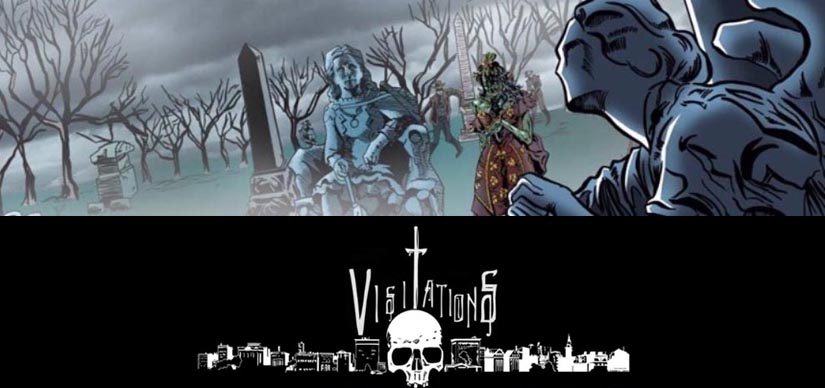Each issue of Visitations is designed to push the boundaries of how to tell a comic book story. In Issue 2, for example, the book requires the reader to physically move the book around and around. The third issue of the book was designed to be more intriguing.
Visitations 3 puts the reader into an area of Chicago that is now extinct: the Levee District. The Levee, at and surrounding the location of the Cermack/Chinatown Red Line El stop, was literally the birth place of organized crime in the city. Not just the birthplace, but the area in which the syndicate known as the Chicago Outfit operated in through to the 21st Century. Chicago crime was founded on gambling and prostitution. When I was growing up in the Lincoln Square area, I witnessed a little bit of what the Levee may have been like. Lincoln Avenue north of Foster Avenue is known as Motel Row. The motels were originally built in the 1950's for traveling salesmen but became instead hourly stopovers for streetwalkers and their customers. It was not a pretty sight to behold. When I read Karen Abbott's book, Sin In The Second City, I realized that the Levee was about a hundred times worse then Motel Row, which is saying something. I knew I wanted write a story and get on my soapbox about it.
 |
| Lincoln Avenue's Motel Row, which is still is still operational, just a lot quieter than it used to be. |
I wasn't sure exactly how to tell the story, then a movie was brought to my attention. Lady In The Lake, directed and starring Robert Montgomery, was a 1947 Philip Marlow film in which the camera is the protagonist. The entire movie is point of view and the only time you see the star is when the camera looks into a mirror. I decided that was the way to tell the Levee story. The reader is the main character - an out of town salesman who ventures into the Levee looking for debaucherous fun and instead finds murder.
 |
| One of the only scenes in Lady In The Lake where the audience sees the film's star. |
In addition to this I decided to change the art style to something reminiscent of the era. Charles Dana Gibson was an illustrator in the late 19th century. He created the image of a modern woman known as the "Gibson Girl". He used a multiple line style that was perfect for the grittiness of the environment while keeping with the look of the times.
 |
| "The Gibson Girl" illustrated by Charles Dana Gibson |
As the salesman goes deeper into the story, the art changes from grey to full color to straight black and white with aggressive red to add to the mood.









